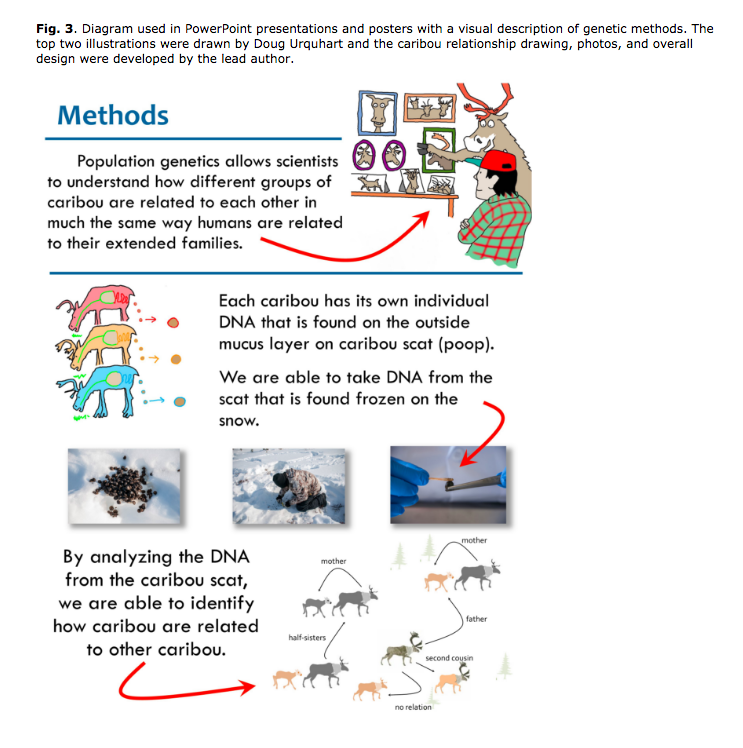Creative convergence: exploring biocultural diversity through art
From Abstract: "Using multiple knowledge sources to interpret patterns of biodiversity can generate the comprehensive species characterizations that are required for effective conservation strategies. Caribou (Rangifer tarandus) display substantial intraspecific variation across their distribution and in the Sahtú Region of the Northwest Territories, Canada, three caribou types, each with a different conservation status, co-occur. Caribou are essential to the economies, culture, and livelihoods of northern indigenous peoples. Indigenous communities across the north are insisting that caribou research be community-driven and collaborative. In response to questions that arose through dialogue with five Sahtú Dene and Métis communities, we jointly developed a research approach to understand caribou differentiation and population structure. Our goal was to examine caribou variation through analysis of population genetics and an exploration of the relationships Dene and Métis people establish with animals within bioculturally diverse systems. To cultivate a research environment that supported łeghágots'enetę “learning together” we collaborated with Ɂehdzo Got'ı̨nę (Renewable Resources Councils), elders, and an advisory group. Dene knowledge and categorization systems include a comprehensive understanding of the origin, behaviors, dynamic interactions, and spatial structure of caribou. Dene people classify tǫdzı “boreal woodland caribou” based on unique behaviors, habitat preferences, and morphology that differ from ɂekwę́ “barren-ground” or shúhta ɂepę́ “mountain” caribou. Similarly, genetic analysis of material (microsatellites and mitochondrial DNA) from caribou fecal pellets, collected in collaboration with community members during the winter, provided additional evidence for population differentiation that corresponded to the caribou types recognized by Dene people and produced insights into the evolutionary histories that contribute to the various forms. We developed culturally respectful and relevant descriptions of caribou variation through partnerships that respect the lives and experiences of people that depend on the land. By prioritizing mutual learning, researchers can broaden their understanding of biodiversity and establish a common language for collaboration."

Image from article.
Access this Resource:
The full text of this article is available at: https://www.ecologyandsociety.org/vol22/iss2/art4/
Polfus, Jean, Deborah Simmons, Michael Neyelle, Walter Bayha, Frederick Andrew, Leon Andrew, Bethann Merkle, Keren Rice, and Micheline Manseau. “Creative convergence: exploring biocultural diversity through art.” Ecology and Society 22, no. 2 (2017).
Additional Info
- Publication Type: Journal Article
- In Publication: Ecology and Society
- Keywords: Land Use|Ethnography



 Phone: 867-374-4040
Phone: 867-374-4040 Email:
Email: